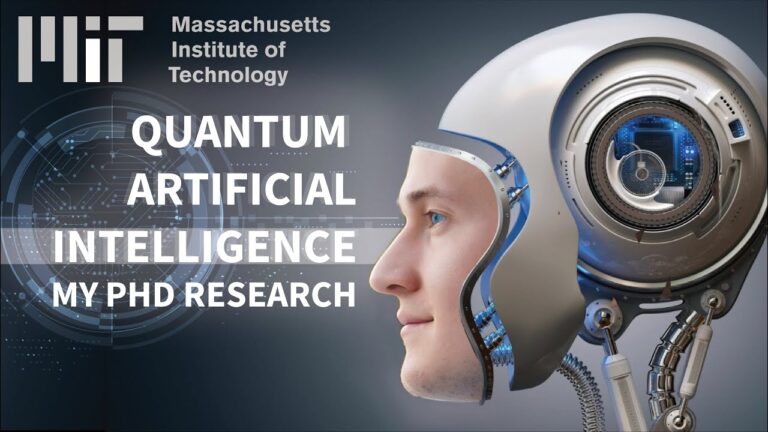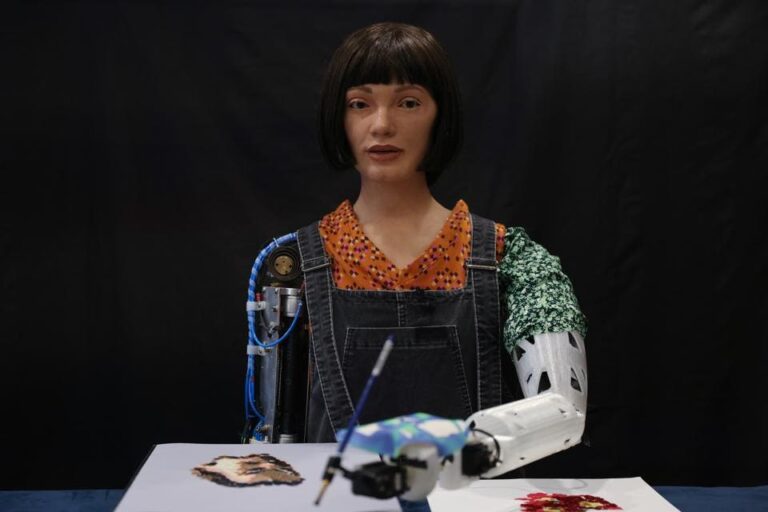AI technology aids wildlife conservation by tracking endangered species and providing data for protection efforts. This innovative approach enhances species monitoring and habitat preservation.
AI and wildlife conservation form a powerful alliance in protecting endangered species. Advanced algorithms analyze vast amounts of data from various sources, such as camera traps, drones, and satellite images. This data helps researchers monitor animal movements, population trends, and habitat changes.
AI enables quicker, more accurate identification of species, which is crucial for timely intervention. Conservationists can then implement effective strategies to combat poaching and habitat destruction. By integrating AI into conservation efforts, we can make significant strides in preserving biodiversity and ensuring the survival of endangered species. This technology offers hope for a sustainable future for both wildlife and ecosystems.

The Role Of Ai In Wildlife Conservation
Artificial Intelligence (AI) plays a crucial role in wildlife conservation. AI technology helps track and protect endangered species. It offers innovative solutions for monitoring and data analysis. This technology helps conservationists make informed decisions.
Emerging Technologies For Biodiversity
Emerging technologies are revolutionizing biodiversity conservation. These technologies include drones, camera traps, and satellite imagery. Drones capture high-resolution images and videos of wildlife habitats. Camera traps provide continuous monitoring without human presence. Satellite imagery offers a broad overview of ecosystems.
| Technology | Usage |
|---|---|
| Drones | High-resolution images and videos |
| Camera Traps | Continuous wildlife monitoring |
| Satellite Imagery | Broad ecosystem overview |
Ai-assisted Animal Monitoring
AI-assisted animal monitoring enhances the tracking of endangered species. AI algorithms analyze data from various sources. These sources include images, videos, and audio recordings. The data helps identify individual animals and their behaviors.
- AI algorithms analyze images and videos.
- AI identifies individual animals.
- AI tracks animal movements and behaviors.
Machine learning models predict future movements of animals. This helps conservationists anticipate threats. They can then take preventive measures. AI tools also detect poaching activities in real-time. This allows for quick intervention to protect wildlife.
Challenges In Protecting Endangered Species
Protecting endangered species is a critical task for conservationists. Despite efforts, many species face extinction threats. Several challenges complicate these conservation efforts.
Habitat Loss And Poaching
Habitat loss is a major threat to wildlife. Forests are cut down for farming and urban development. This leaves animals without homes. Poaching is another serious issue. Illegal hunting reduces animal populations quickly. Both habitat loss and poaching make it hard to protect endangered species.
Limitations Of Traditional Conservation Methods
Traditional conservation methods have several limitations. They often rely on manual tracking and observation. This can be slow and inefficient. Conservationists may miss important data. Also, manual methods cannot cover large areas effectively.
Technology can help overcome these challenges. AI offers new tools for tracking and protecting endangered species. Using AI, we can gather data quickly and accurately. This helps conservationists make better decisions.
Machine Learning: A Game Changer For Ecology
Machine learning is transforming wildlife conservation. It helps track and protect endangered species. Scientists use it to analyze vast data quickly. This boosts conservation efforts significantly. Let’s explore its impact on ecology.
Pattern Recognition In Animal Migration
Pattern recognition helps scientists understand animal movements. They can identify migration routes using machine learning. This ensures better protection for species on the move. Here’s how it works:
- Sensors collect data on animal movements.
- Machine learning algorithms analyze this data.
- Patterns in migration routes are identified.
Understanding these patterns aids in creating safe corridors. This reduces human-animal conflicts. It also helps in managing habitats effectively.
Predictive Analytics For Ecosystem Management
Predictive analytics is another powerful tool. It forecasts changes in ecosystems. This helps in proactive conservation efforts. Here’s the process:
- Data from various sources is collected.
- Machine learning models analyze this data.
- Future changes in ecosystems are predicted.
These predictions guide conservation strategies. They help in managing resources better. This ensures the survival of endangered species.
| Benefits of Machine Learning in Conservation | Details |
|---|---|
| Faster Data Analysis | Enables quick decision-making |
| Accurate Predictions | Improves conservation strategies |
| Pattern Recognition | Identifies crucial animal movements |

Ai In The Field: Real-world Applications
Artificial Intelligence (AI) is revolutionizing wildlife conservation. It helps track and protect endangered species. This section explores real-world applications of AI in the field.
Drones For Aerial Surveys
Drones equipped with AI can conduct aerial surveys of vast areas. These drones capture high-resolution images and videos. Conservationists use these images to monitor animal populations. They can also spot illegal activities like poaching.
AI algorithms analyze the data collected by drones. They identify animals and detect any unusual patterns. This helps in quick decision-making. It also reduces the time and effort needed for manual surveys.
| Feature | Benefit |
|---|---|
| High-resolution imagery | Detailed monitoring |
| Automated data analysis | Faster decision-making |
| Wide coverage | Monitor large areas quickly |
Automated Camera Traps For Wildlife Tracking
Automated camera traps are another powerful tool. They capture images whenever an animal passes by. These traps operate 24/7, even in remote locations.
AI processes these images to identify species. It can also track individual animals over time. This helps in understanding animal behavior and movement patterns.
Here are some benefits of automated camera traps:
- Non-intrusive monitoring
- Continuous data collection
- Accurate species identification
By using AI, conservationists can better protect endangered species. They get real-time insights and can take quick actions.
Conservationists Embrace Ai: Success Stories
Artificial Intelligence (AI) is transforming wildlife conservation. Conservationists use AI to track and protect endangered species. This new technology provides accurate data and helps make better decisions. Here are some success stories of AI in wildlife conservation.
Species Reintroduction And Population Studies
AI helps in species reintroduction and studying animal populations. For example, AI monitors endangered species like the black-footed ferret. Scientists use AI to watch these animals in their natural habitat. AI can also predict animal movements and behavior.
AI tools like drones capture images and videos of wildlife. These images help scientists count animals and understand their health. AI analyzes these images quickly and accurately. This helps in making quick decisions to protect species.
Here is a table showing the benefits of AI in species reintroduction and population studies:
| Benefit | Description |
|---|---|
| Monitoring | Tracks animal movement and behavior |
| Data Analysis | Quickly processes images and videos |
| Decision Making | Provides accurate data for better decisions |
Anti-poaching Ai Initiatives
AI is a powerful tool against poaching. Poaching is a big threat to many species. AI helps detect and prevent these illegal activities. For instance, AI-powered cameras can spot poachers in real-time.
AI systems can alert rangers when they detect suspicious activities. This allows rangers to act quickly and stop poachers. AI also analyzes data to predict poaching hotspots. This helps in deploying resources more effectively.
Here are some ways AI helps in anti-poaching:
- Real-time surveillance with AI cameras
- Data analysis to find poaching patterns
- Quick alerts to rangers
AI technology saves many animals from poachers. It makes wildlife conservation more effective and efficient.

Ethical Considerations In Ai Deployment
AI is transforming wildlife conservation. It helps track and protect endangered species. Yet, deploying AI raises ethical questions. We must consider data privacy and ensure AI benefits all species.
Data Privacy And Wildlife
Data privacy isn’t just for humans. Wildlife data needs protection too. Sensitive data can include animal locations and behaviors. Sharing this data can help researchers. But it can also pose risks. Poachers might misuse the data. Thus, data encryption and secure storage are crucial.
AI systems often collect vast amounts of data. This data must be anonymized. It helps protect the animals. Ethical AI ensures data privacy standards. It uses data responsibly. This safeguards wildlife from potential harm.
Ensuring Ai Benefits All Species
AI should benefit all species, not just a few. AI tools must be designed with biodiversity in mind. They should address the needs of various species. This includes both large and small animals. AI can help monitor diverse habitats. This ensures no species is left behind.
We must prioritize inclusive AI. It should help endangered species. It must also support those not yet at risk. AI tools can provide insights into species health. This allows early intervention. By doing so, AI promotes a balanced ecosystem.
In summary, ethical AI deployment is vital. It protects data privacy and benefits all species. This makes AI a powerful tool in wildlife conservation.
| Ethical Aspect | Consideration |
|---|---|
| Data Privacy | Secure storage and encryption of wildlife data |
| Anonymization | Ensuring collected data is anonymized |
| Inclusive AI | Designing AI tools for various species |
| Biodiversity | Monitoring diverse habitats |
Collaborative Efforts: Partnerships Between Tech And Conservation
Technology and wildlife conservation are working together to save endangered species. This collaboration is powerful. AI helps track animals, prevent poaching, and preserve habitats. These efforts involve NGOs, tech companies, and governments.
Ngo And Tech Industry Synergy
NGOs and tech companies form important partnerships. These teams develop tools to monitor animal movements. They use drones, GPS collars, and camera traps. These tools collect valuable data.
Tech companies provide advanced technology. NGOs offer field expertise. Together, they create solutions. They aim to protect and study endangered species. For example, using AI, they can identify individual animals from photos.
Governmental Support For Ai Conservation Projects
Governments play a key role in supporting AI conservation projects. They fund research and provide resources. Laws and regulations are created to protect wildlife.
They also promote international cooperation. Governments ensure that conservation efforts are effective. They help in sharing data globally. This makes tracking and protecting animals easier.
The Future Of Wildlife Conservation With Ai
The future of wildlife conservation with AI is promising. AI technologies are transforming how we track and protect endangered species. These tools help conservationists in ways never seen before. From tracking animal movements to predicting poaching activities, AI offers limitless possibilities.
Innovative Technologies On The Horizon
New technologies are emerging to aid wildlife conservation. Drones equipped with AI can monitor vast areas quickly. These drones can detect animals and human activities from the sky.
Camera traps with AI can identify different species. They can also detect poachers and alert authorities instantly. Satellite imagery combined with AI helps monitor remote areas. This technology provides real-time updates on wildlife movements.
Bioacoustic monitoring uses AI to analyze animal sounds. This helps in tracking species that are hard to see. Machine learning algorithms can predict poaching hotspots. This allows for better allocation of resources.
Educating Conservationists In Ai
Teaching conservationists to use AI is crucial. Training programs are being developed. These programs focus on AI tools and their applications in wildlife conservation.
Workshops and online courses offer hands-on experience. These educational platforms cover everything from drone operation to data analysis. Collaborations between tech experts and conservationists are growing. These partnerships help in sharing knowledge and expertise.
Conservationists can learn to use AI for data collection and analysis. They can also learn to interpret AI-generated insights. This makes their work more efficient and effective.
Field training sessions are also available. These sessions teach how to deploy AI technologies in real-world scenarios. This practical approach ensures conservationists are well-prepared.
Frequently Asked Questions
How Ai Is Helping Track Endangered Species?
AI helps track endangered species using drones, camera traps, and GPS collars. It analyzes images and data to identify animals. AI models detect patterns, monitor habitats, and predict threats. Conservationists use this information to make informed decisions and protect wildlife.
How Is Ai Used In Wildlife Conservation?
AI helps in wildlife conservation by monitoring animal populations, detecting poaching activities, and analyzing ecological data. It uses drones, camera traps, and predictive models to track and protect endangered species. AI enhances conservation efforts by providing real-time insights and efficient data analysis.
How Is Technology Being Used To Help Track Save Endangered Wildlife?
Technology helps track endangered wildlife using GPS collars, drones, and camera traps. These tools monitor movements and detect poaching.
How Is Ai Used In Environmental Conservation?
AI aids environmental conservation by monitoring wildlife, analyzing climate data, detecting deforestation, and predicting natural disasters. It enhances resource management and supports sustainable practices.
Conclusion
AI is revolutionizing wildlife conservation by tracking and protecting endangered species. It offers precise, efficient, and effective solutions. By embracing this technology, we can safeguard biodiversity for future generations. Let’s support AI-driven initiatives to ensure the survival of our planet’s most vulnerable creatures.
Together, we can make a significant difference.






